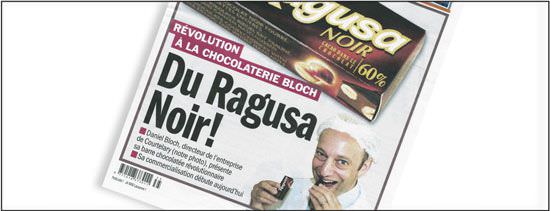
“In Italy for 30 years under the Borgias they had warfare, terror, murder, and bloodshed, but they produced Michelangelo, Leonardo da Vinci, and the Renaissance. In Switzerland they had brotherly love - they had 500 years of democracy and peace, and what did that produce? The cuckoo clock.”
Most of you will recognize that quote from the classic film noir The Third Man. Harry Lime, played by Orson Welles, is justifying his dirty deeds to Joseph Cotton as they get off the Ferris wheel in post-war Vienna. Welles introduced that piece of dialogue to Graham Greene’s script, but he didn’t quite get the facts right since, as we all know, cuckoo clocks were first made in the Black Forest. In fact, rumour has it that there was a precursor to the cuckoo clock invented in 1206 called an ‘elephant clock’ although I’m intrigued as to the sound it would have made on the hour.
Be that as it may, as this summer of 2008 draws to a close, I remain amazed at the headlines the newspapers use through what we often term ‘the silly season’. As you can see from the reproduction of the front page of Le Matin dated August 25, one of Switzerland’s daily newspapers, there’s been a ‘revolution’ in the weird and wonderful world of chocolate: the creation of a dark chocolate Ragusa bar. Daniel Bloch, the director of the Camille Bloch chocolate company, is seen here bravely facing the camera without makeup wearing a stunning outfit in white cotton with a contrasting red patterned tie and completed by the latest vogue in Indian calico bonnets that surely will have specialists in millinery circles eating their hearts out. Not merely a pretty face, Mr. Bloch performs for the reader an amazing feat of dexterity by holding the chocolate’s packaging in one hand, whilst tentatively easing his teeth into one of the revolutionary dark Ragusa bars … and, at the same time, smiling.
We’ve had a few revolutions in our industry, from the cuckoo clock to the pocket watch and on to the wristwatch. We’ve seen incredible innovations and ‘revolutionary’ creations by men such as Abraham-Louis Breguet and Georges-Auguste Leschot and in more modern times from Christophe Claret and FranÇois-Paul Journe to Patek Philippe, Vacheron Constantin, Jaeger-LeCoultre and TAG Heuer. (I’ve purposely omitted any mention of the polemical quartz revolution.)
Nevertheless, when the word ‘revolution’ is mentioned, personally I tend to think more of events that had far-reaching repercussions such as the Industrial Revolution in England (1760 – 1850) when fundamental changes in industry and the economy brought about fish and chips wrapped in newspapers and rhubarb crumble, or the American Revolution (1775-1783) which led to George Washington becoming the First President of the United States and the world being overrun by hamburgers and French fries. The French had their revolution (1789-1799) that saw kings and queens being replaced by Napoleon and the guillotine being used for more than just cutting the end off cigars, not to mention the Russian Revolution (1917) which eliminated the tsars, saw Rasputin taking a much longer underwater swim than he would have liked and introduced the world to borscht soup.
But let’s not get sidetracked from the raison d’Être of this epistle: chocolate. The cocoa bean has been around almost since time immemorial, although the Mayas used the ground beans to make a sort of beer rather than chocolate as we know it today. Much later, the Aztecs made an actual chocolate drink and the Spaniards brought the beans back to Europe in the 1520s where chocolate became the drink of the elite for the next 300 or so years. Joseph Fry of Bristol, England, made the next major discovery in the world of chocolate when he invented a steam engine for grinding the beans that allowed chocolate to be manufactured on a larger scale, to be followed fairly soon afterwards by Fry & Sons inventing mouthwateringly, the yummy chocolate bar in 1847. In Switzerland, Daniel Peters produced the country’s first milk chocolate bar in 1875, using powdered milk that had been invented by a certain Henri NestlÉ a few years earlier.
Since then the Swiss manage, on average, to eat around 10 kilos of chocolate per person per year – that’s around 100 bars of chocolate – or put more simply about two bars a week – which has created an industry estimated at around 900 million Swiss francs a year.
So, 60-odd years after Orson Welles’ declaration and 560 years of brotherly love, democracy and peace in Switzerland, we now have not only the cuckoo clock and a very healthy watch industry, but more importantly, we have a dark chocolate Ragusa bar.
As the good book says: ‘In the beginning, the Lord created chocolate, and he saw that it was good. Then he separated the dark from the light, and it was better.’
Vive la rÉvolution!
Source: Europa Star October-November 2008 Magazine Issue








